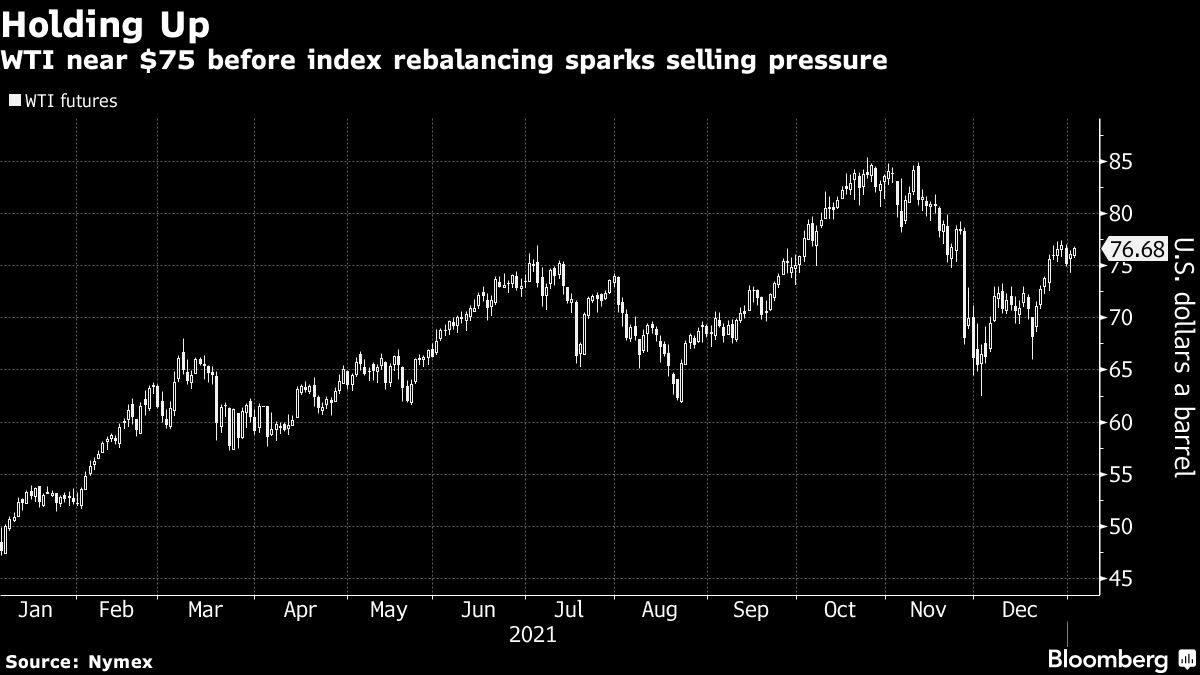
(Bloomberg) — U.S. oil futures are trading above $75 but the yearly reshuffling of billions of dollars of commodity investments are about to trigger a sharp bout of selling.
Every January, the world’s two biggest commodities indexes — the S&P GSCI Index and the Bloomberg Commodities Index — reset, spurring a raft of inflows and outflows across commodity markets. For WTI, that means investments tracking both benchmarks could be ready to pull almost 60 million barrels worth of futures contracts from the market, according to Societe Generale estimates.
The dollar value of those flows is significant — the French bank estimated in November it would be the equivalent of about $4.6 billion. Citigroup Inc. expects about $3.1 billion of selling, according to a December report. The flows occur during a five-day roll period for each index, the first of which begins on the fifth working day of January, though traders often position themselves ahead of time.
The pressure from financial flows will hit the benchmark U.S. crude futures contract at a time when prices remain elevated as recovering demand and still-constrained supply from OPEC and its allies help drain inventories. West Texas Intermediate’s current price is about $10 short of reaching the highest since October 2014.
While there’s no definitive estimate of how much money tracks BCOM and S&P GSCI, the former said last year it’s followed by more than $100 billion in assets. Bloomberg Index Services Ltd., the administrator of Bloomberg Indices, including BCOM, is a wholly-owned subsidiary of Bloomberg LP.
The figures for total assets under management matter because they, in part, dictate the value of the rebalancing. If assets under management are larger, then the size of the rebalancing can increase.
Other significant factors determining the scale of the flows are how individual commodities performed in 2021, production levels and overall trading volumes.
©2022 Bloomberg L.P.